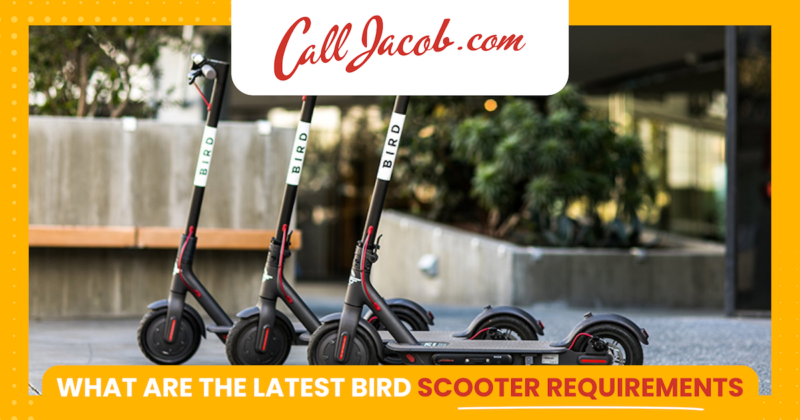As Bird scooters appear in cities across California, the potential for accidents is increasing. There are requirements in place to help you safely share the road and park your scooter. We’ll detail the latest Bird scooter requirements and how to have a safe, uneventful ride.
How to Use a Bird Scooter
Riding a Bird scooter requires downloading the Bird app and creating an account. It includes a map that shows available electric scooters nearby. Tap a button on the service map to unlock a scooter and scan the vehicle’s QR code with your phone’s camera (or, manually enter an alpha-numeric code).
Practice Safe Riding
The company has many guidelines and suggestions for operating its vehicles. Riding a scooter can be tricky if you’ve never done it before. However, it’s not that complicated. First, you need to gain momentum by kicking forward with your foot. Once the vehicle gets moving, use the thumb accelerator to speed up and the handbrake to slow the scooter or stop. Some Bird scooters feature a “Beginner Mode”, which limits acceleration.
- Stay within designated riding zones, marked in purple.
- Park in approved areas, not in the middle of a sidewalk.
- When ending the ride, tap “End Ride” on the app and photograph the scooter as prompted.
Obey All E-Scooter Laws
The California Vehicle Code (CVC) has been updated to accommodate E-scooters, which are defined as vehicles equipped with an electric motor, floorboard, and handlebars. These laws include:
- CVC 21235: All riders under 18 years of age must wear a properly fit/fastened bicycle helmet.
- CVC 22411: The state speed limit for E-scooters is 15 mph; violators face a penalty of up to $250.
- CVC 21229: E-scooters must be ridden in a “Class II Bicycle Lane”, designated by a solid white line, and usually with a bicycle symbol inside white borders.
- *Exceptions include when passing another vehicle or pedestrian, making a left-hand turn, turning right, or avoiding hazards in the lane.
- CVC 21235: Prohibited activities include riding with a passenger, driving on the sidewalk, and not having a valid driver’s license or learner’s permit.
- CVC 21228: Riders must dismount and walk their E-scooter to make a left-hand turn.
- CVC 275: Riding an E-scooter inside a crosswalk is a violation.
- CVC 21221: E-scooter riders must follow all motor vehicle traffic rules and face the same penalties for driving under the influence.
Under California law, riders are not required to have insurance to use an electric scooter. Driver’s license requirements increase the likelihood that an E-scooter rider has auto insurance.
There are many parking rules. Aside from leaving a scooter in a designated zone, like a specialized rack, the vehicle must be parked upright and pedestrian space must not be blocked. It is prohibited to park at a corner, crosswalk, or near a curb ramp as well as on a narrow sidewalk or against a building facade.
Obstructing doors, driveways, and other access areas are prohibited as is obstructing access to a bus stop, loading zone, or fire hydrant. Parking in front of or on mailboxes, trash receptacles, benches, kiosks, news racks, and other sidewalk amenities is forbidden.
Call Jacob Today
If you or a loved one has been in a Bird scooter accident while riding, or have been struck by someone not meeting Bird scooter requirements, call The Law Offices of Jacob Emrani. Serious accidents occur all too frequently. If used improperly, E-scooters can be dangerous. To learn more about safety tips, check out our electric scooter accident page, or call (888) 859-8439 for a free consultation.



